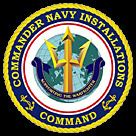Type Enterprise Command | ||
 | ||
Active October 1 - 2013 - present Role Manages, operates, controls and supports naval installations and activities Headquarters | ||
Navy Installations Command (CNIC) is an Echelon II shore command responsible for all shore installations under the control of the United States Navy. As an Echelon II command, it reports directly to the Chief of Naval Operations. It is responsible for the operation and management of all Naval installations worldwide through eleven Navy Regions.
Contents
Mission
Prior to the creation of CNIC, all of the Navy's major shore echelon II commanders (BUMED, NAVSEA, NAVSUP) operated their own installations independent of each other. This led to a hodgepodge of installation operating procedures, that, when installations operated in close proximity to one another, resulted in sometimes incompatible and large policy differences. Thus, it was the intent of CNIC is to establish a single shore installation management organization that will focus on installation effectiveness and improve the shore installation management community's ability to support the fleet. When it was established October 1, 2003, the stand up of CNIC was an effort in the continuation of fleet and regional shore installation management organizational alignment that began in 1997 with the reduction of installation management claimants from 18 to 8.
Operations
CNIC has overall responsibility and authority as the for all installation support programs and is the lead within Navy for installation policy and program execution oversight. CNIC works to coordinate services and across the Naval Enterprises (aka shore Echelon II commands), and best provide the installations, services and programs in their support. These services include installation management and operations, such as port operations, airfields, security, utilities, land use planning, environmental aspects, planning and real estate, and emergency management, as well as fleet support services such as base housing, weapons storage, MWR recreational programs, child care and youth programs.
Its mission is summed up as supporting the three 'F's: "Fleet, Fighter and Family."
Regions
Historically, each region was a part of a Naval district from their inception in the early 1900s until their disestablishment in the late 1970s and 1980s. At that point, individual installations were typically operated independent of any true centralized command structure. In 1998, the Navy embarked on a new era in shore management, with San Diego leading the way. As the Navy reduced its operational forces, it became essential for the shore establishment supporting those forces to be realigned.
As part of the new command structure, each naval installation or supported command now reports to one of eleven regional commanders who are responsible for the operation and management of the installations within their regional jurisdiction. Each regional commander is a one-star Rear Admiral (RDML) with the exception of the Commanders of Navy Region Mid-Atlantic, Navy Region Japan and Navy Region EURAFSWA, who is a two-star Rear Admiral (upper half) (RADM).
Former Regions
Navy Region Midwest was disestablished on September 30, 2014 as part of a reorganization of Navy flag billets assets in the wake of the United States budget sequestration in 2013. Formerly headquartered in Great Lakes, Illinois, it included installations in 16 states. These are now split between the Northwest, Mid-Atlantic, and Southeast regions.
